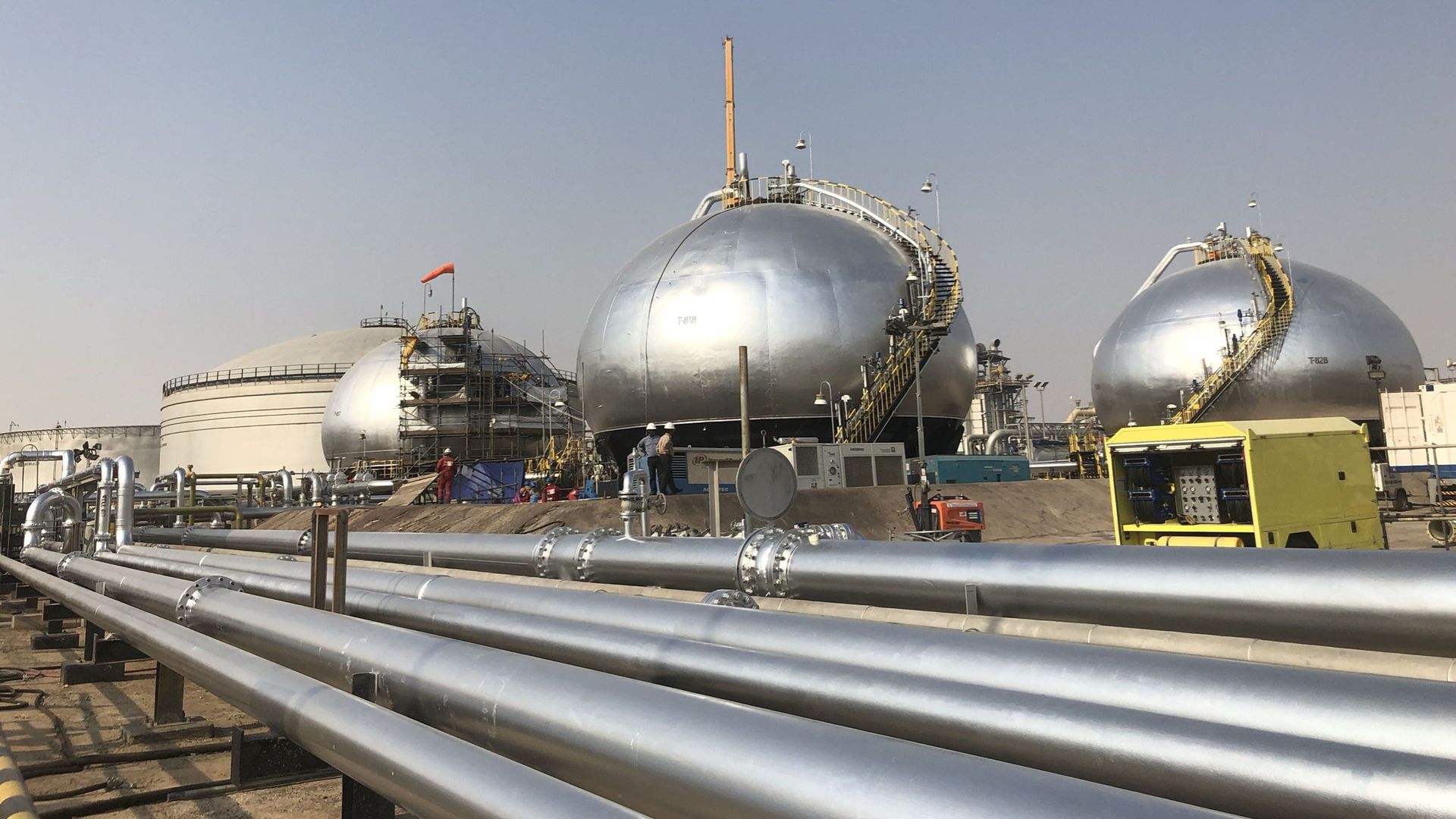尊敬的用户您好,这是来自FT中文网的温馨提示:如您对更多FT中文网的内容感兴趣,请在苹果应用商店或谷歌应用市场搜索“FT中文网”,下载FT中文网的官方应用。


Opec+ has gone through some dry times. But now it has struck oil. Saudi Arabia and Russia’s production cuts have succeeded in lifting oil prices by 27 per cent to $95 per barrel since the end of June. With oil now within sight of last year’s $100/bbl average, consensus estimates for the energy sector look out of date.
欧佩克+ (Opec+) 经历了一些干旱时期。但现在它打出了石油这张牌。自6月底以来,沙特和俄罗斯的减产成功使油价上涨27%,至每桶95美元。随着油价接近去年每桶100美元的水平,对能源行业的普遍预测似乎已经过时。
This run marks a return of form for the cartel. Not so long ago, member producers quailed at tighter output quotas, fearing a rapid supply response from US shale producers. The new financial discipline demanded by exploration and production investors — profits before growth — has given Opec a stronger hand.
这种情况标志着卡特尔的回归。就在不久前,成员国还对收紧产量配额感到不安,担心美国页岩油生产商会迅速对供应做出反应。勘探和生产投资者要求的新财务准则——利润优先于增长——让欧佩克有了更强的控制力。
A surprisingly resilient global economy has helped. Despite fears about economic weakness in China, its crude imports rose to 11.5mn barrels a day in August, according to Jorge León at Rystad Energy. That is 2mb/d higher than this time last year. That sort of leap leaves China accounting for the lion’s share of this year’s forecast world demand growth. The International Energy Agency puts it at 2.2mb/d.
出人意料的全球经济韧性也起到了帮助作用。Rystad Energy的豪尔赫•莱昂(Jorge León)表示,尽管人们担心中国经济疲软,但8月份中国的原油进口量仍增至每天1150万桶。这比去年同期每天高出200万桶。这种飞跃使中国在今年预计的全球需求增长中占据了最大份额。国际能源机构(IEA)估计为每天220万桶。
The world now produces less oil than it consumes. Cue rapid destocking. Inventories around the world plummeted in August and should continue to fall over the coming months.
目前,全球石油产量低于消耗量。库存迅速减少。8月份全球库存大幅下降,未来几个月应该会继续下降。
The tightness in the market supply may well continue into next year. The exponential penetration of electric vehicles should lop off half a million barrels of oil from demand. Yet overall economic growth should lead to a small increase in consumption compared with this year’s 101.8mb/d.
市场供应紧张很可能会持续到明年。电动汽车的迅速普及将使石油需求减少50万桶。然而,与今年的每天1.018亿桶相比,整体经济增长应该会导致石油消费量小幅增加。
Meanwhile, oil production has to run just to stand still. Output from big, conventional oilfields declines at a rate of about 3 to 5 per cent annually, no matter what. Few new projects are expected to come on stream in 2024. The wild card here is Iran, where production has risen sharply despite sanctions.
与此同时,石油生产必须保持稳定。无论如何,大型常规油田的产量每年都会以3%至5%的速度下降。预计2024年投产的新项目寥寥无几。伊朗的情况比较特殊,尽管受到制裁,该国的石油产量仍大幅上升。
The “Saudi lollipop” — a sweetener for the oil market — has wrongfooted analysts. Analysts expect earnings at European energy producers to fall 23 per cent fall in 2023 and a further 6 per cent next year, according to Bernstein Research. These should start to rise — and with it the stock prices of the European majors, such as Shell and Eni.
“沙特棒棒糖”——石油市场的甜头——让分析师们措手不及。伯恩斯坦研究公司(Bernstein Research)的数据显示,分析师预计,欧洲能源生产商的利润在2023年将下降23%,2024年再下降6%。这些数字应该会开始上涨,壳牌(Shell)和埃尼(Eni)等欧洲石油巨头的股价也会随之上涨。
The sector’s lowly forward multiple of 7.4 times, despite record cash flow yields, could test the resolve of investors to avoid these carbon-heavy giants.
尽管现金流收益率达到创纪录水平,但该行业的预期市盈率仅为7.4倍,这可能会考验投资者避开这些重碳巨头的决心。